<< Our Photo Pages >> Castro de Pragança - Castro or Chafurdão in Portugal in Lisboa
Submitted by Bak_teria on Wednesday, 05 August 2015 Page Views: 2014
Iron Age and Later PrehistorySite Name: Castro de PragançaCountry: Portugal
NOTE: This site is 8.63 km away from the location you searched for.
Distrito: Lisboa Type: Castro or Chafurdão
Nearest Town: Cadaval Nearest Village: Pragança
Latitude: 39.197948N Longitude: 9.05888W
Condition:
| 5 | Perfect |
| 4 | Almost Perfect |
| 3 | Reasonable but with some damage |
| 2 | Ruined but still recognisable as an ancient site |
| 1 | Pretty much destroyed, possibly visible as crop marks |
| 0 | No data. |
| -1 | Completely destroyed |
| 5 | Superb |
| 4 | Good |
| 3 | Ordinary |
| 2 | Not Good |
| 1 | Awful |
| 0 | No data. |
| 5 | Can be driven to, probably with disabled access |
| 4 | Short walk on a footpath |
| 3 | Requiring a bit more of a walk |
| 2 | A long walk |
| 1 | In the middle of nowhere, a nightmare to find |
| 0 | No data. |
| 5 | co-ordinates taken by GPS or official recorded co-ordinates |
| 4 | co-ordinates scaled from a detailed map |
| 3 | co-ordinates scaled from a bad map |
| 2 | co-ordinates of the nearest village |
| 1 | co-ordinates of the nearest town |
| 0 | no data |
Internal Links:
External Links:
I have visited· I would like to visit
Bak_teria visited on 23rd Jul 2015 - their rating: Cond: 3 Amb: 5 Access: 4
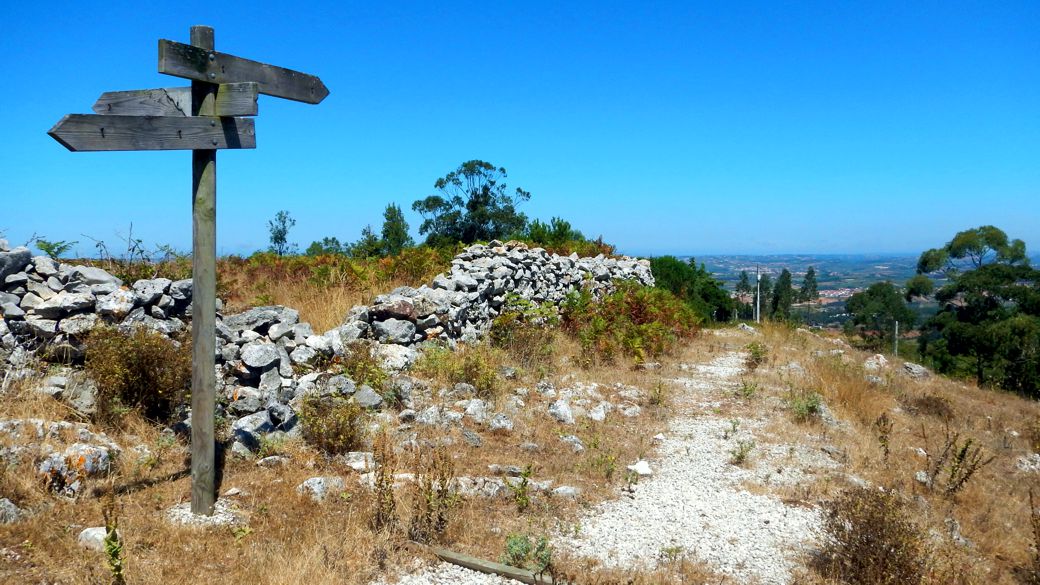
This fortified castro is located in Pragança, on the northwest slope of the Montejunto hill. It was discovered in 1893, was originally excavated by António Maria Garcia and José Leite de Vasconcelos and since then has been the subject of continuing study. The remains found in the area indicate that this was a busy town since the Late Neolithic and through the Copper, Bronze and Iron ages. Then, it was finally Romanized, with signs of occupation until the first century AD. Its archaeological artefacts are currently distributed in several national museums and are considered very important for the study of Prehistory, Proto-history and Romanization of the country of Portugal. Strange as it seems, this monument is not yet classified.
About the architecture
The Municipality of Cadaval requested the assistance of the District Assembly of Lisbon for further investigation of this ancient settlement. These interventions took place between 1988 and 1990 in three campaigns of archaeological excavations. It is not known any prehistoric structures but these campaigns have uncovered, on the highest point of the fort, a large tower of semicircular plant with about 15 m in length. resting against the cliff. It has a north entrance corridor and a rectangular annex to the South. This structure is based on a rock formation and takes advantage of it. Unfortunately it was partially destroyed by ancient excavations. Is acknowledge that this tower was built in the early Copper Age.
About the artefacts and the treasure
In the 1930's, when the monument was again interventioned by order of Leonel Trindade, a great part of the artefacts were sold to the Museu Nacional de Arqueologia (Portuguese National Archaeological Museum) located at the Jerónimos Monastery, in Lisbon.
In 1934, the son of a miller of Pragança found a gold account, selling it to a goldsmith. In order to find out more about it he researched the site, at the top of the path leading to the fort, in shallow grounds he also found a treasure made out of jewelry. This set consists of a gold lunula, three silver lunulae, a silver torque (or massive necklace), a silver vase, and a gold edge dated from the Iron Age (fifth century BC). Nowadays, this treasure is also on display at the National Archaeological Museum.
About the access
This fortified settlement is located in a protected area and can be visited anytime for free. There is a pedestrian route that passes within the area of the site. Look for more informations on Cadaval webpage.
Links and other important information sources (majority of texts written in Portuguese):
- Portal do Arqueólogo
- Webpage from the Municipality of Cadaval with information about the Castro
- Portuguese Wikipedia page
- Free PDF document published in 2007 with some information regarding the Castro of Cadaval, taken from O Arqueólogo Português, a periodical magazine from the Museu Nacional de Arqueologia (Portuguese National Archaeological Museum)
- Webpage of the Portuguese National Archaeological Museum
You may be viewing yesterday's version of this page. To see the most up to date information please register for a free account.

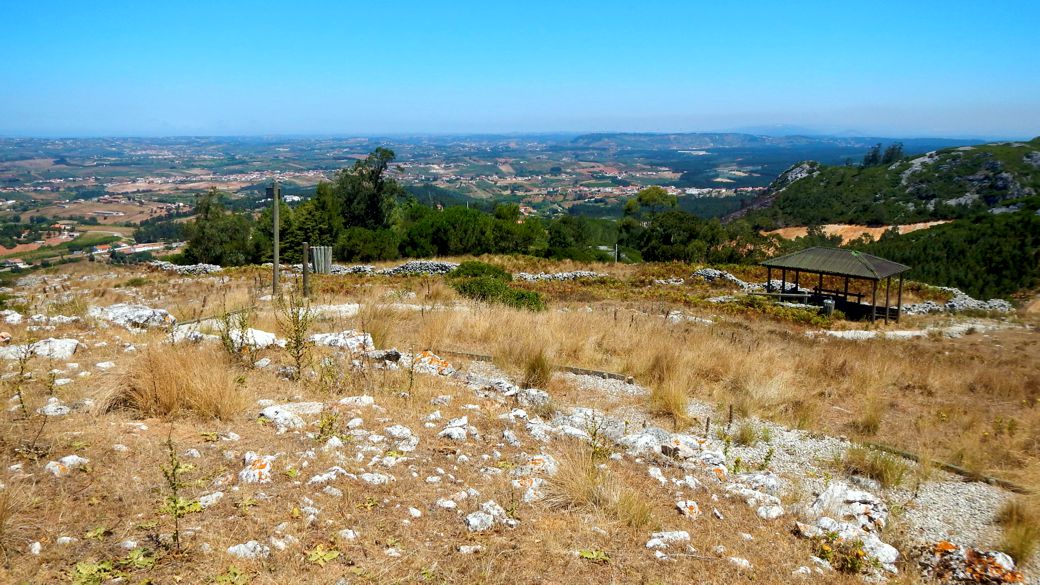
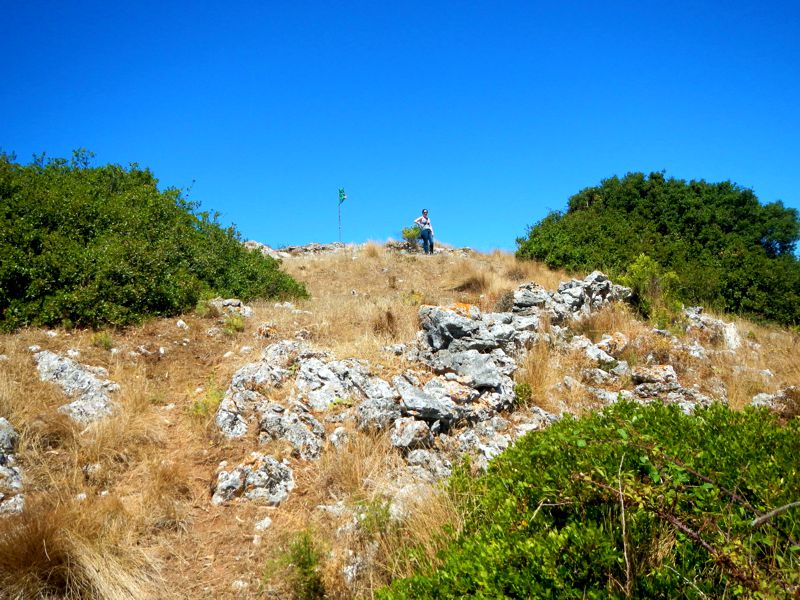
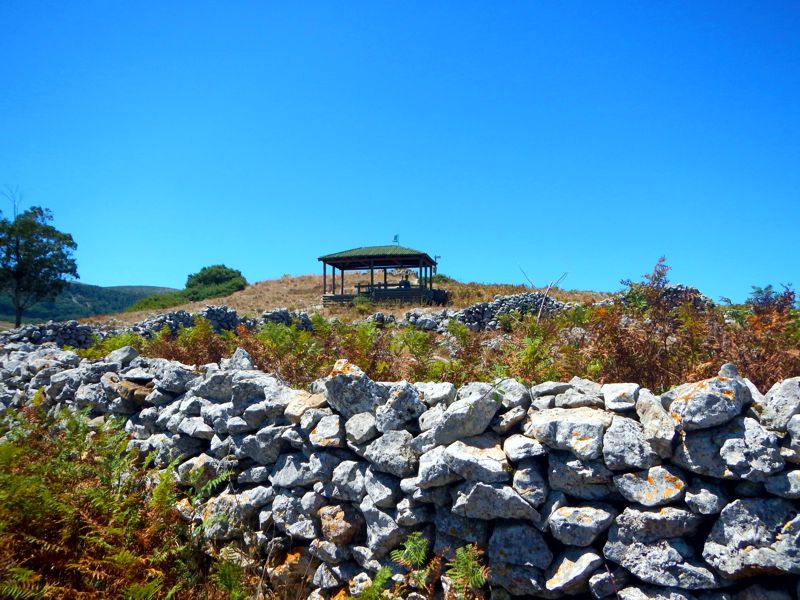
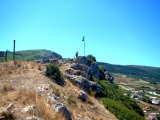
Do not use the above information on other web sites or publications without permission of the contributor.
Click here to see more info for this site
Nearby sites
Click here to view sites on an interactive map of the areaKey: Red: member's photo, Blue: 3rd party photo, Yellow: other image, Green: no photo - please go there and take one, Grey: site destroyed
Download sites to:
KML (Google Earth)
GPX (GPS waypoints)
CSV (Garmin/Navman)
CSV (Excel)
To unlock full downloads you need to sign up as a Contributory Member. Otherwise downloads are limited to 50 sites.
Turn off the page maps and other distractions
Nearby sites listing. In the following links * = Image available
19.0km E 83° Castro de Vila Nova de São Pedro* Castro or Chafurdão
19.7km NNW 339° Cidade Romana de Eburobritium Ancient Village or Settlement
22.4km WNW 283° Museu da Lourinhã* Museum
22.8km SW 231° Tholos do Barro* Chambered Tomb
23.9km SW 235° Castro do Zambujal* Castro or Chafurdão
27.9km NNE 29° Anta-Capela de Alcobertas* Burial Chamber or Dolmen
31.3km SSW 204° Tholos da Tituaria* Chambered Tomb
33.8km S 184° Dólmen de Monte Serves* Burial Chamber or Dolmen
34.3km WNW 301° Gruta da Furninha* Cave or Rock Shelter
36.6km SSW 195° Anta de Casaínhos* Burial Chamber or Dolmen
37.3km SSW 201° Anta de Carcavelos* Burial Chamber or Dolmen
37.9km SSW 199° Gruta de Salemas* Cave or Rock Shelter
38.1km SSW 199° Anta do Alto da Toupeira* Burial Chamber or Dolmen
42.1km N 4° Estação Arqueológica de Parreitas Ancient Village or Settlement
43.6km SW 218° Conjunto Megalítico de Barreira* Standing Stones
45.6km SSW 198° Anta das Pedras Grandes* Burial Chamber or Dolmen
47.7km S 183° Humming Stone Lisbon (Summstein) Modern Stone Circle etc
49.9km SSW 199° Necrópole de Carenque* Rock Cut Tomb
50.5km SSW 201° Anta do Senhor da Serra* Burial Chamber or Dolmen
50.9km SSW 201° Anta da Estria* Burial Chamber or Dolmen
51.0km SSW 200° Anta do Monte Abraão* Burial Chamber or Dolmen
51.2km SSW 203° Anta da Agualva* Burial Chamber or Dolmen
52.2km SSW 212° Sintra Menhir* Standing Stone (Menhir)
52.8km NNE 29° Miradouro Jurássico de Alqueidão da Serra* Modern Stone Circle etc
53.3km SSW 212° Castelo dos Mouros, Sintra* Cave or Rock Shelter
View more nearby sites and additional images

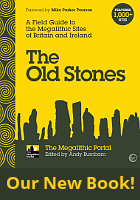




 We would like to know more about this location. Please feel free to add a brief description and any relevant information in your own language.
We would like to know more about this location. Please feel free to add a brief description and any relevant information in your own language. Wir möchten mehr über diese Stätte erfahren. Bitte zögern Sie nicht, eine kurze Beschreibung und relevante Informationen in Deutsch hinzuzufügen.
Wir möchten mehr über diese Stätte erfahren. Bitte zögern Sie nicht, eine kurze Beschreibung und relevante Informationen in Deutsch hinzuzufügen. Nous aimerions en savoir encore un peu sur les lieux. S'il vous plaît n'hesitez pas à ajouter une courte description et tous les renseignements pertinents dans votre propre langue.
Nous aimerions en savoir encore un peu sur les lieux. S'il vous plaît n'hesitez pas à ajouter une courte description et tous les renseignements pertinents dans votre propre langue. Quisieramos informarnos un poco más de las lugares. No dude en añadir una breve descripción y otros datos relevantes en su propio idioma.
Quisieramos informarnos un poco más de las lugares. No dude en añadir una breve descripción y otros datos relevantes en su propio idioma.